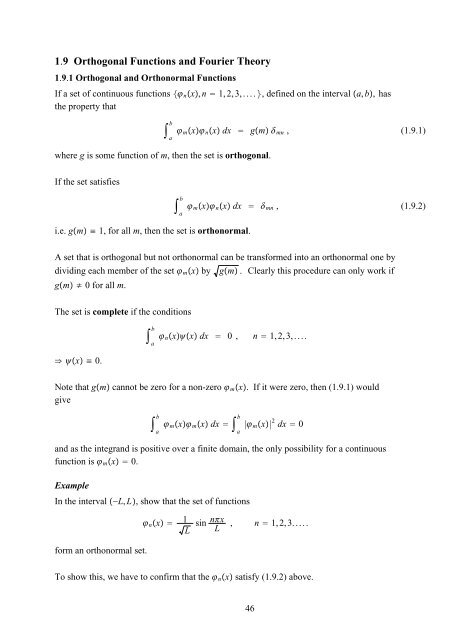Fourier Series
Fourier Series
Fourier Series
Create successful ePaper yourself
Turn your PDF publications into a flip-book with our unique Google optimized e-Paper software.
1.9 Orthogonal Functions and <strong>Fourier</strong> Theory1.9.1 Orthogonal and Orthonormal FunctionsIf a set of continuous functions n x,n 1,2,3,...., defined on the interval a,b, hasthe property thatabm x n x dx gm mn , (1.9.1)where g is some function of m, then the set is orthogonal.If the set satisfiesabm x n x dx mn , (1.9.2)i.e. gm ≡ 1, for all m, then the set is orthonormal.A set that is orthogonal but not orthonormal can be transformed into an orthonormal one bydividing each member of the set m x by gm . Clearly this procedure can only work ifgm ≠ 0 for all m.The set is complete if the conditions x ≡ 0.abn xx dx 0, n 1,2,3,....Note that gm cannot be zero for a non-zero m x. If it were zero, then (1.9.1) wouldgiveabm x m x dx ab|m x| 2 dx 0and as the integrand is positive over a finite domain, the only possibility for a continuousfunction is m x 0.ExampleIn the interval −L,L, show that the set of functions n x 1 Lsin nxL, n 1,2,3.....form an orthonormal set.To show this, we have to confirm that the n x satisfy (1.9.2) above.46
















